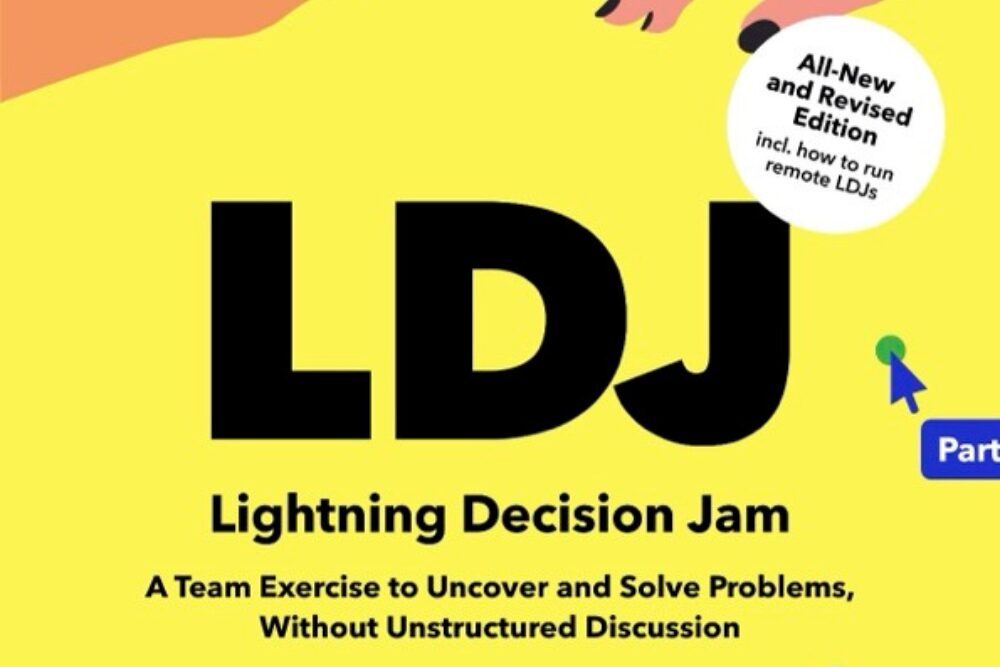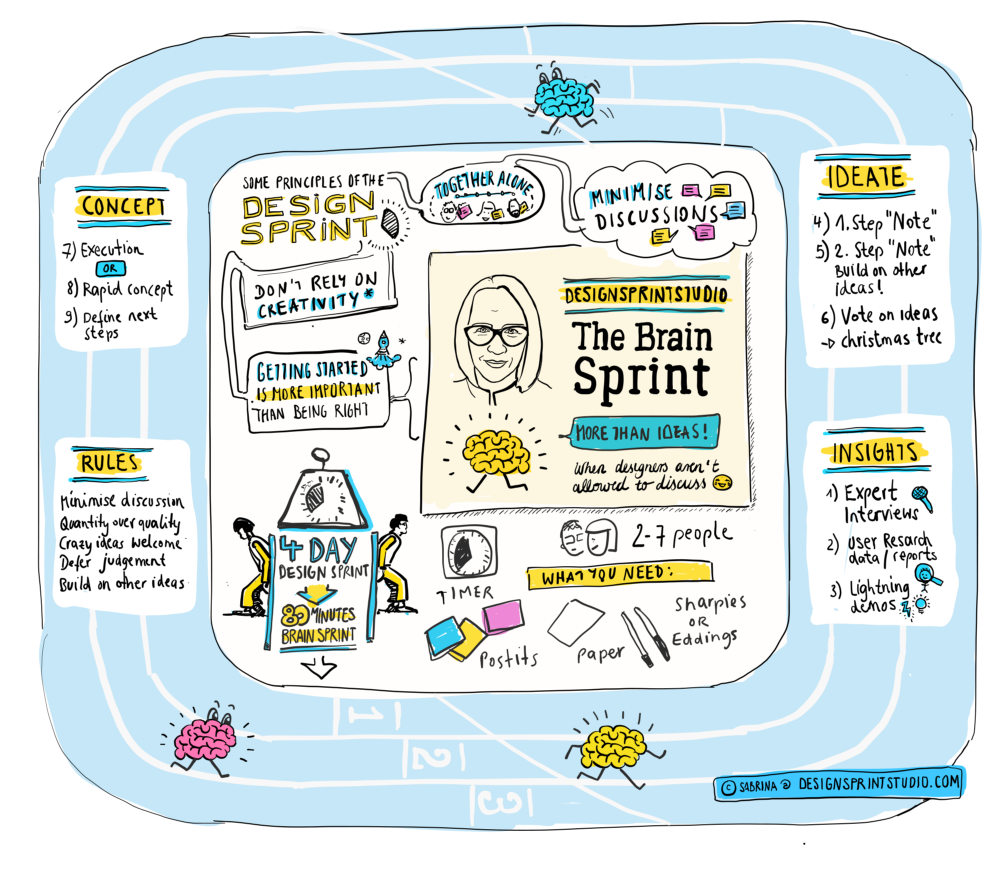Lightning Decision Jam (LDJ)
It doesn’t matter where you work and what your job role is, if you work with other people together as a team, you will always encounter the same challenges:
- Unclear goals and miscommunication that cause busy work and overtime
- Unstructured meetings that leave attendants tired, confused and without clear outcomes.
- Frustration builds up because internal challenges to productivity are not addressed
- Sudden changes in priorities lead to a loss of focus and momentum
- Muddled compromise takes the place of clear decision- making, leaving everybody to come up with their own interpretation.
- In short, a lack of structure leads to a waste of time and effort, projects that drag on for too long and frustrated, burnt out teams.
Replace all open discussion or brainstorming with a structured process that leads to more ideas, clearer decisions and better outcomes.





